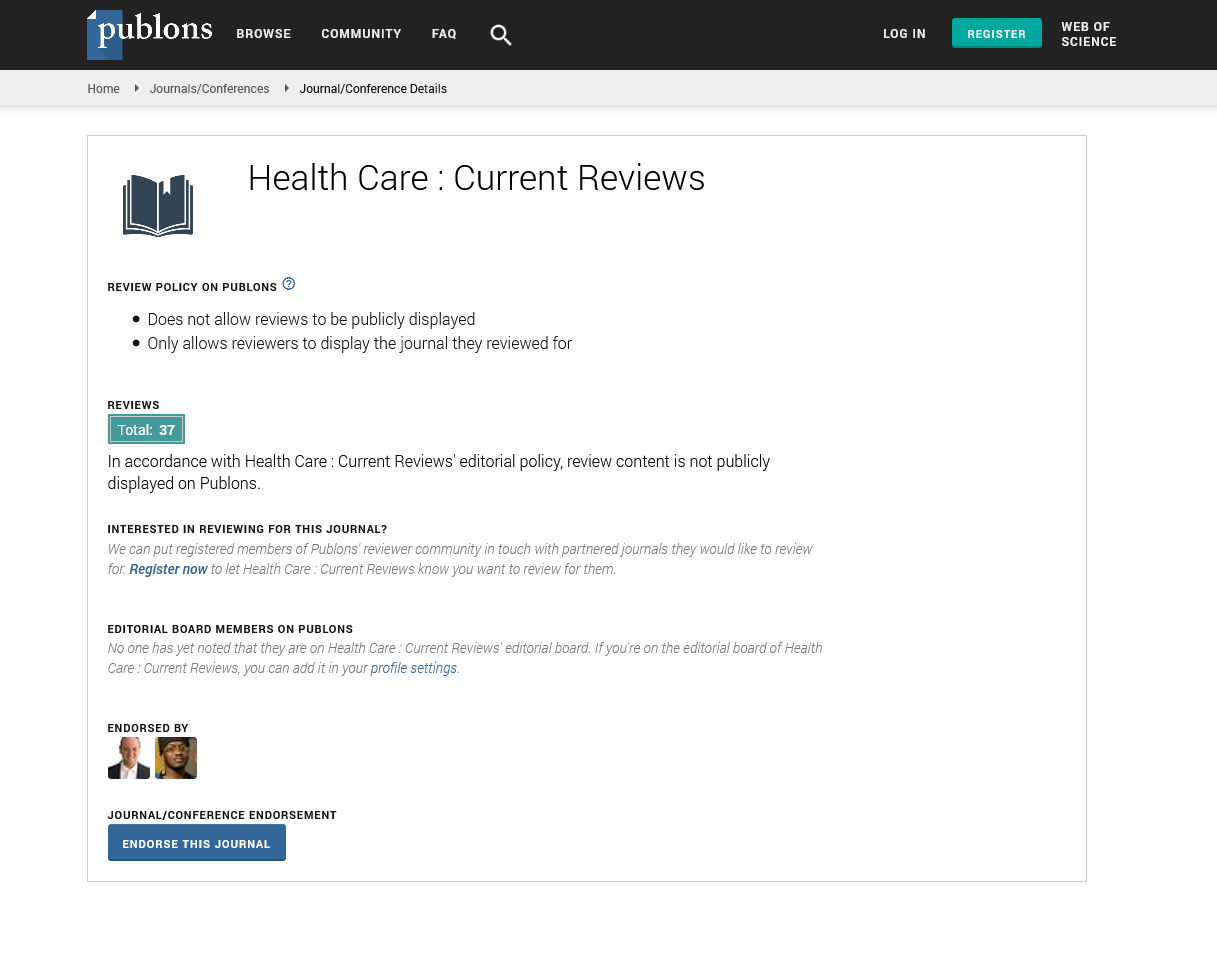Indexed In
- Open J Gate
- Academic Keys
- RefSeek
- Hamdard University
- EBSCO A-Z
- Publons
- Geneva Foundation for Medical Education and Research
- Google Scholar
Useful Links
Share This Page
Journal Flyer

Open Access Journals
- Agri and Aquaculture
- Biochemistry
- Bioinformatics & Systems Biology
- Business & Management
- Chemistry
- Clinical Sciences
- Engineering
- Food & Nutrition
- General Science
- Genetics & Molecular Biology
- Immunology & Microbiology
- Medical Sciences
- Neuroscience & Psychology
- Nursing & Health Care
- Pharmaceutical Sciences
Abstract
Filtering out carcinogenic polycyclic aromatic hydrocarbons from wood smoke used in food processing (fish/meat)
Humberto Eduardo de Carvalho Santos Ferreira*, David E Duarte, Moises L Pinto, Rui G Santos and Joao C M Bordado
During the development of Project SmokLean a polyurethane foam containing activated charcoal has been developed. The foam
has been produced with MDI diisocyanate and sustainable polyols (either natural or synthesized from natural products) designed to
create an hydrofobic environment capable of capturing no less than 95% of the Polycyclic Aromatic Hydrocarbons (PAH) contained
in smoke, generated by wood incomplete combustion, before it reaches the food smoking chamber. In particular, we are interested in
reducing carcinogenic PAH in the smoke by using these inexpensive disposable foam filters, with minimum alterations in the food
smoking instalation, minimum loss of pressure across the filter and minimal sensorial alteration of the product.
HPLC-DAD-Fluorescence was used to further develop official methods to quantify PAH by incorporating a new mobile phase program
and a new internal standard synthesyzed in-house. Flow reduction during the better part of the runs generates significant savings in
solvent cost.
Foam filters used in preliminary runs, at 60ºC, for 30 minutes, were treated with a rotating abrasive surface and the generated powder
was aspirated into a reservoir. The height of the filter was devided into four layers and the powder generated from each layer was extracted
(82ºC) in a Soxhlet apparatus for 6 hours, using acetonitrile. The extract was diluted to a fixed volume, analysed by HPLC and
the chromatogram was used to plan the dilutions/concentrations needed for the quantitation above LOQ with the internal standard
stock solution.
In-depth quantitative profiles of PAH retained in filters will be discussed.
Published Date: 2021-07-20; Received Date: 2021-06-11

